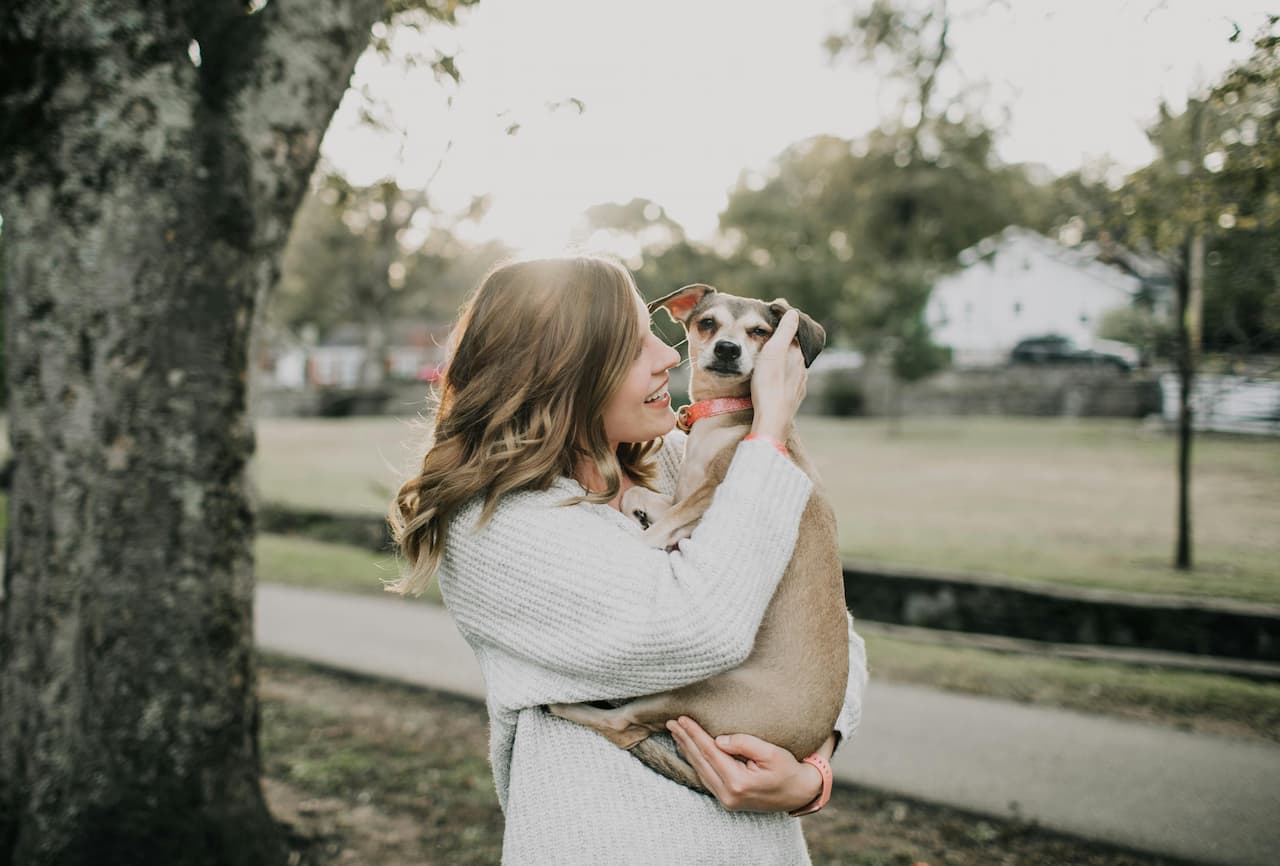Understanding Pet Insurance: costs, coverage and making wise choices
As veterinary care costs surge, more pet parents secure insurance safeguarding household budgets. Policies reimburse medical expenses arising from:
- Accidents like bone fractures swallowed toy obstructions or toxin poisonings
- Illnesses encompassing ear infections, diabetes, or seizure disorders
- Hereditary conditions like glaucoma, arthritis, or allergies
- Even cancer diagnostics/treatments like chemotherapy
Standard policies help greatly but maximum annual payout limits usually apply therefore reading restrictions merit equal weight as covered conditions when selecting plans. Insurance offsets big unexpected vet bills so owners focus on pet health, not financial stresses alone during duress. Peace comes by securing provisions for the unknown ahead.
Top Reasons to Consider Pet Health Insurance
Weighing pet insurance involves assessing:
- Unexpected Vet Expenses – Only 16% of Americans carry pet insurance today estimating less than $500 yearly veterinary spending. Yet reality finds over 30% of visits actually exceed $1000+ once essential bloodwork, medications, and procedures costs compound upon diagnosis. Insurance buffers major blows.
- Financial Hardship Protection – Similarly 59% of surveyed pet parents lacking insurance risk tapping savings or carrying credit card debt paying surprise vet bills over $500. Never face heartbreaking healthcare vs financial security choices including worst-case euthanasia decisions with policies backing you.
- Peace of Mind – Perhaps most invaluable, pet insurance delivers emotional reassurance handling medical needs as best benefits pets absent budget pressures delaying or forgoing vet-advised gold standard care options forced weighing wallet limitations over health alone. The mental relief proves liberating.
- Accessing Quality Care – Top veterinary hospitals often require proof of insurance before authorising specialty/emergency advanced treatment due high out-of-pocket costs involved. Coverage unlocks access to the best expertise maximising positive outcomes. Don’t lose options.
- Preventative Wellness Inclusions – While many plans omit routine wellness coverage, some premium policies contribute partial reimbursements towards annual wellness exams, vaccines, teeth cleanings, and preventatives lowering total ownership costs further. Check plan details.

Common Expenses Pet Health Insurance Covers
Though policy specifics vary across hundreds of pet insurers, most plans cover:
- Accidental Injuries – From fractures and poisoning to swallowed toy obstructions, accidents make up 20% of insurance claims reimbursing expensive diagnostics and surgery costs exploring mysterious limps or traumatic damage from falls requiring plates, screws, and specialist intervention.
- Illness Expenses – The majority of 70% claims fund treatments tackling conditions like chronic ear infections, skin allergies, diabetes, or newly diagnosed cancers seeking chemotherapy and medications to keep pets healthy and balanced long term.
- Hereditary and Congenital Conditions – Even predisposed conditions manifesting from genetic defects present at birth like glaucoma, epilepsy, hip dysplasia, and inheritable disorders often qualify for partial coverage after initial waiting periods expire post-enrollment.
- Crucial Diagnostic Tests – Insurance agrees to reimburse ultrasound, endoscopy, MRI scans, and elaborate procedures either identifying root causes or guiding therapy planning for optimizing care directions.
- Surgeries and Hospital Stays – Whether ACL knee repairs, tumor removals, or simply overnight monitoring needing veterinary supervision round-the-clock, insurance refunds hefty surgical expenses alongside ancillary integrated costs that altogether quickly skyrocket.
Notable Expenses Pet Insurance Usually Omits
However, most insurance excludes:
- Pre-Existing Conditions – Illnesses diagnosed or showing symptoms noticed pre-enrollment face blanket denial given insurers cannot ascertain predisposition risks retroactively before agreeing on coverage. Future diagnosis is sometimes gray.
- Preventative Care – Annual wellness exams, routine diagnostics, vaccines, and prevention medications represent known recurring costs reasonably budgeted for unlike random illnesses hence insurers omit such anticipated expenses from policies as standard. Some premium plans now allow slight reimbursements incentivising early diagnostics.
- Cosmetic and Elective Procedures – Any medically unnecessary veterinary services like tail docking, breed enhancement surgeries, or non-problematic benign mass removals aimed solely at improving perceived aesthetic appearances seldom find insurance approval. Pets function fine without so expenses stay personal.
- Experimental Treatments – Brand new veterinary therapies undergoing long-term trial investigations before mainstream integration seldom initially meet approval criteria as evidence still compiles supporting efficacy first. Over time adoption may come pending demonstrated results through peer vetting reproducibility.
Overview of Pet Insurance Plan Types
Primary insurance plans bifurcate between:
- Accident Only Coverages – Lower premiums ensure only accidental injury treatments like broken bones, eye injuries, or toxin poisonings with illnesses completely excluded given higher likelihoods over lifetimes. Great for young healthy pets on budgets.
- Accident + Illness Plans – Typical comprehensive protections expand covering both accidents alongside common illnesses forging eventually like ear infections, digestive issues, diabetes, or seizure disorders. Broader safety net but increased monthly premiums mirroring elevated risks.
- Wellness Packages – Some premium plans now include portions of predictable wellness costs like vaccines, routine blood work, and dental cleanings further offsetting ownership costs for those valuing maximum prepaid preventions bundled alongside accident/illness coverage in single policies. Not seen everywhere but gaining attraction.
What Impacts Pet Insurance Pricing
Multiple individual variables influence costs when quoting customised policies:
- Plan Type Chosen – Comprehensive accident + illness plans cost more in premiums over accidents-only given higher probability payout over pet lifetime adding illnesses risks on top. Wellness option plans at the premium tier top pricing cover most incidences.
- Annual Payout Caps – Plans balance premium costs and reimbursement limits to needs. Capping total annual payouts permits lower premiums while higher limits warrant pricing increments reflecting the amount total claims could incur. Check caps fit expected breeds/sizes known expenses.
- Deductible Amount – Like car insurance, selecting higher per-incident deductibles lowers premium outlay but increases out-of-pocket costs upfront needing payment before insurance contributions kick in afterward. Consider cash flow balancing premium costs now vs later.
- Reimbursement Percentages – While some plans refund 90%+ vet invoices, policy premium costs associated directly correlate to percentages covered for you. Lower reimbursement plans still provide giant relief while taming premium costs in the long run.
- Breed-Specific Predispositions – Purebred lineage prone towards higher likelihood breed-specific illnesses like cancer or orthopedic disorders increase premium quoting pricing models tailored accounting unique genetically inclined conditions possibly manifesting lifecycles requiring greater dedicated reserves paying future claims. DNA drives risk projections pricing tailored accounting associated illness probability in projections pricing risk exposures anticipated.
- Regional Cost of Living – From New York City to small-town America, what local area veterinary healthcare services actually cost where you live also factors adjusting premium ranges mirroring local vet prices in the region. Pricing aligns with realistic regional healthcare costs.
How to Choose the Optimal Pet Insurance Plan
Finding ideal pet insurance necessitates:
- Assessing Realistic Risks – Consider specific breed-prone conditions, age/life stage needs, existing health statuses, family history clues, and regional veterinary healthcare costs realistically informing quotes best-estimating probabilities needing coverage.
- Comparing Multiple Plan Options – Work with reputable registered pet insurers detailing every cost variable in policy documents for side-by-side comparisons apples-to-apples on plan value relative to price and priority protections needed most. Insurers gladly generate multiple quotes while you assess options parsing apart differences with a fine-tooth comb before electing final intelligent selections.
- Reading Fine Print Carefully – Beyond merely seeing “accident/illness coverage” advertised boldly, carefully confirm deductibles, reimbursement rates, claiming processes, exclusions like hips displayed coverage gaps or other surprise omissions sometimes buried exclusions sabotaging decisions lacking due diligence before cementing less optimal plans. Avoid assumptions – verify explicitly.
- Set Real Budget Considerations – Ultimately choose sustainable premium costs – averaging $30-60 monthly – that won’t force coverage abandonment short term given realistic existing cash flow abilities to fulfill premium obligations for the long haul. Making informed trade-offs balancing premiums, claims processes and protections prevents shortsighted selections from failing when crisis strikes.
Searching ‘how much does pet insurance cost’ will generate multiple competitive quotes. These quotes will provide you with an outline of all the information that will ultimately aid in determining the ideal selection for your pet’s needs. You can then sustainably commit to appreciating the long-term advantages protection brings – so when the unpredictable happens, the focus stays on treating pets, not the devastating costs.
Conclusion
As veterinary healthcare costs continue rising exponentially in recent decades, more pet owners find themselves blindsided by sudden multi-thousand dollar invoices acquiring emergency procedures or diagnosing serious illnesses striking beloved furry family members unexpectedly.
![[AD] We went to the newly opened Cha Sha Kingston a couple of weeks ago, and wow — taste bud adventure unlocked! The boys devoured the masala fries and chicken tikka rolls, while we couldn’t get enough of that epic kebab butter curry 😍🍛.
It’s amazing value for food this tasty (and everyone left happy and VERY full!).
Delicious food, vibrant vibes and incredible value — the perfect combo for your next meal.
📍Cha Sha Kingston
43 Surbiton Road, KT1 2HG
🌐 chasha.co.uk
Other Cha Sha locations in Birmingham, Ilford, Southampton and Wembkey
#ChaSha #ChaShaKingston #KingstonEats #FoodieFinds #UKFoodie #FoodReview #KingstonUponThames #FamilyEats #FamilyDining #FoodieKids](https://suburban-mum.com/wp-content/uploads/2016/02/574770541_18560351146016840_6855048070839528040_n-180x320.jpg)

![[AD] We’re a cricket-mad family, so we’re buzzing that @thehundred is back this August! 🏏🔥
To get ready, M tried out the official FREE Activity Pack — and it’s brilliant! 🙌
Packed with fun games, creative challenges and sporty tasks, it’s perfect for getting kids hyped whether you’re at home or on the go.
👉Download yours now (link in bio)
@londonspirit @ovalinvincibles #EveryMomentCounts #TheHundred
#EnglandCricket #CricketFamily #TheHundredCricket #LondonBloggers #Cricket #CricketIsLife #kidsfun](https://suburban-mum.com/wp-content/uploads/2022/11/505472555_18531279601016840_7092520074819907569_n-180x320.jpg)



![[AD - Press visit]
We enjoyed the glorious sunshine this weekend with a trip to Brighton. We went on the @brightoni360official which is right by the sea front.
The i360 pod take a slow journey up, allowing you to take in views across Brighton and the South Downs 450ft above ground. There’s a bar inside with drinks and snacks available to purchase and the experience lasts 25 minutes.
Afterwards, we headed to the open air roller rink for a roller skating session!
The roller rink is:
⭐ Suitable for over 5s
⭐ £6.50 if you have your own skates or £9.50 if you need to hire them
⭐ 45 minutes per session
Full details to visit the i360 + skating
📍 Brighton i360, Lower Kings Road, Brighton BN1 2LN
🚗 Parking nearby (we parked in the Regency Square Car park)
🎟️ Prices start from £25.40 for an adult and £16.90 for a child
🕐 Opening hours are currently Sun-Fri 10.30am-18.30pm and until 19.30pm on Saturdays
☕️ Bar inside the i360, cafe and gift shop
Book tickets here:
https://tickets.brightoni360.co.uk/tickets/?_ga=2.195305772.1869001490.1689671753-1757164059.1689671753/#events?eventid=157](https://suburban-mum.com/wp-content/uploads/2015/04/417980235_313576471048632_3682382982231216432_n.jpg)

![[AD] ***Summer of fun at Barracudas Activity Camps!****
There is plenty for kids to do at @barracudas_activity_day_camps
From Tennis, Archery, Swimming, Motor Sports and more you can be sure that there will be something for kids aged 4.5-14. ⚽🏈🥅🎾🏓🏎️🏹🏊♂️🏉
You can book on a day by day basis - so it can fit in with any other days out/activities you have planned and there are early drop off and late pickup options available. Barracudas are also Ofsted registered so you can use your Childcare Vouchers too.
⭐⭐⭐Get £20 off a week or £4 off a day using my discount code: MARIA20⭐⭐⭐
#BarracudasActivityDayCamp #BarracudasActivityCamp #BarracudaAmbassadors #SummerHolidays #SchoolHolidays #Summer2023 #SummerCamp #DayCare #Camp #KidsCamp #surreymummy #surreymums #SummerOfFun #ActivityCamps #HolidayCamps #Childcare #SchoolHolidays #schoolholidaycamps](https://suburban-mum.com/wp-content/uploads/2024/07/353583570_625625966167953_545896259645102575_n.jpg)



![[AD] We have some super exciting news...we have been chosen to be Laser Quest Ambassadors, and the boys are over the moon!
We are really lucky that our local Laser Quest (@laserquestkingston) is just around the corner from us. It means we can pop in of a weekend or anytime during the school holidays, and with summer just around the corner, I know Laser Quest will be one of our go-to places for some family fun.
As well as games of Laser Quest, there are also VR experiences and arcade amusements too. To find out a bit more about how Laser Quest works, you can read my blog post: https://www.suburban-mum.com/laser-quest-kingston/ (clickable link in bio)
Don't forget to keep an eye out for our Laser Quest posts - I'm going to be giving away two family passes to use at Laserquest Kingston!
If you can't wait and want to head down to Laser Quest to try it out, use the code SUMMER30 for 30% off your booking. The code is valid from now until the end of August 2023 and can be used on Laser Quest games and birthday party bookings.
#LaserquestAmbassador #Laserquest #LaserquestKingston #ActivitiesForKids #FamilyFun #DaysOutWithKids #Lasertag #LaserquestVR #Kingston #ThingsToDoInKingston #SurreyFamilyDaysOut #ThingsToDoWithKids #RainyDayFun #SurreyMummy #SurreyLife #LifeWithKids #LifeWithBoys #familyfunday](https://suburban-mum.com/wp-content/uploads/2015/04/353230107_797358078406942_2405522556733455165_n.jpg)

![[AD] The sun has finally made an appearance and the boys have been making the most of it by spending it
in the garden.
They’re go-to is always football and they’ve been trying to improve their aim and accuracy with the new Messi Foldable Footlball goal from the #MessiTrainingSystem range.
I love the fact the goal is foldable, making it easy to store away when not in use. It is also lightweight so you can effortlessly pack it up and take it to the park or to a friend’s house.
The Messi Foldable Football Goal retails at £36 and can be purchased from @argos
You can read my full review here: https://www.suburban-mum.com/messi-foldable-football-goal/
#TrainLikeMessi #FoldableFootballGoal #FootballSkills #OutdoorFun #LionelMessi #LeoMessi #FootballAtHome #OutdoorKids #JustGetOutside #OutdoorsAndFree #ScreenFreeKids #WhateverTheWeatherKids @flair_gp](https://suburban-mum.com/wp-content/uploads/2015/04/341194882_615024710178056_41977149395989448_n.jpg)

![[AD] We are absolutely thrilled to announce that we are Barracuda Ambassadors again this year.
With Easter just around the corner, the boys were sent the @barracudas_activity_day_camps new camp kit in preparation for the school holidays.
There’s a wide range of activities for kids aged 4.5 - 14 including Tennis, Archery, Basketball, Arts & Crafts and more.
If you like the sound of Barracudas, find out more over on their website. You can also save £20 a week or £4 a day, using my discount code: MARIA20](https://suburban-mum.com/wp-content/uploads/2024/07/336812306_765234558514317_685553691647241974_n.jpg)


![[AD - Gifted]
Last weekend we were invited to try out @tsarettaspice’s new Bottomless Brunch menu and I can tell you it was thumbs up all round!
There’s a good choice tapas on offer from Punjabi fish fingers, Indo Chinese Chicken to Spiced Lamb Scotch Eggs and Manchurian Cauliflower (which was amazing!)
If you’re local to Twickenham and fancy giving them a try here’s are the details.
Tsaretta Spice Bottomless Brunch
⭐️£37.50 per head for bottomless Prosecco or cocktail of the day
⭐️£55 per head for bottomless Champagne
⭐️ Food included: 4 tapas selections and dessert or 2 tapas selections, a pav or naanwich and dessert
⭐️ Non-alcohol brunch is also available
Tsaretta Spice
55 Church Street
Twickenham
TW1 3NR
You can also read our full review over on the blog (link in bio)](https://suburban-mum.com/wp-content/uploads/2024/07/334565436_5960402314015030_663031098700829518_n.jpg)



